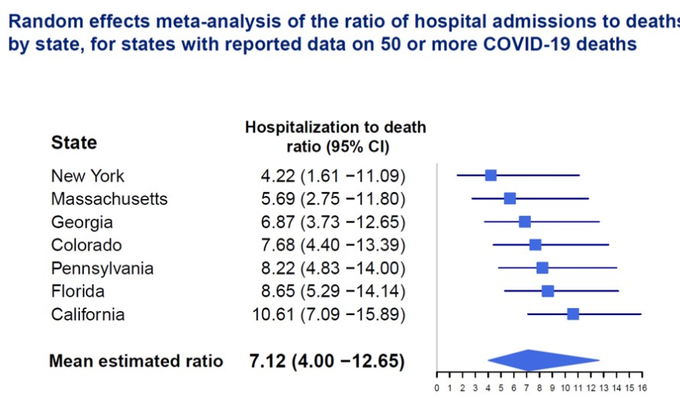One key difference in the updated IHME model is a new assumed value of a key parameter. This is the ratio of hospitalizations to deaths.
In the original version, it was assumed there were 11.1 hospitalizations for each death.
Importantly, this means that patients are doing WORSE (more deaths).
But this has the counter-intuitive effect of making things look BETTER. For the same number of deaths, fewer people will be hospitalized.
Multiplying by 7.1 will suggest smaller need than multiplying by 11.1.
For example, in Germany, many more people are hospitalized early on in illness and tend to do better as a result.
So my theory is that the forecasts reflect these state-by-state differences, and this is why hardest hit states seem to paradoxically do better. They need a smaller extrapolation factor.



